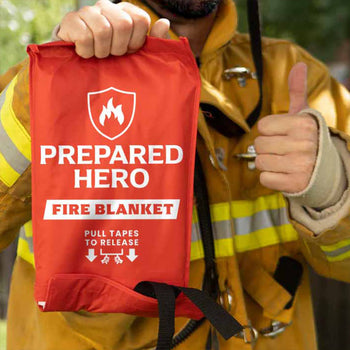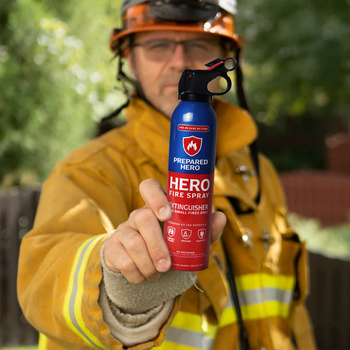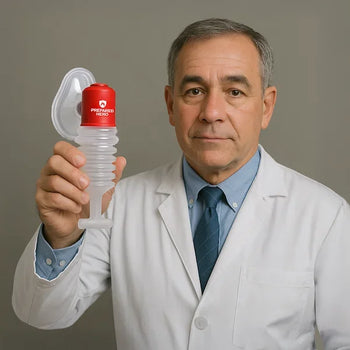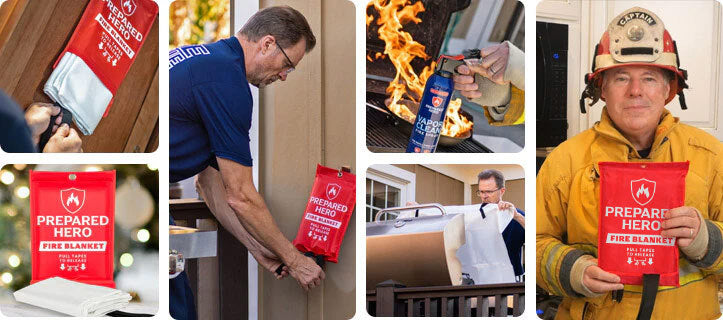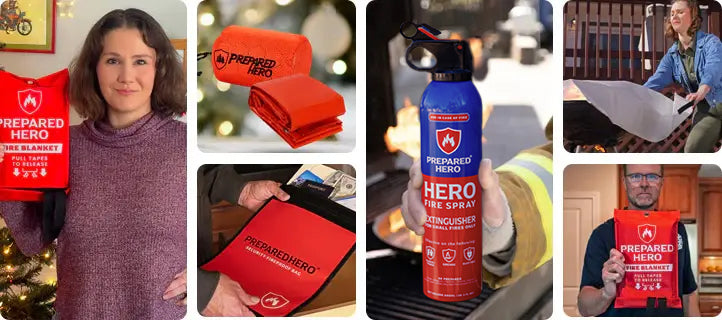Where you put your smoke detectors matters just as much as installing them. Proper placement makes sure they can detect...
Did you know? About 94% of police departments authorized pepper spray, including 100% of forces in jurisdictions with 500,000 people or more. It also reduced violent behavior in 93% of incidents involving assailants. On the other hand, 98% of people who used bear sprays were uninjured by bears in close-range encounters.
While both sprays use capsicum (the ingredient in chili peppers), their purpose, composition, and strength differ. Whether you're hiking in bear territory or walking alone at night, knowing which spray to use can make a huge difference.
So, what exactly are the differences between bear spray and pepper spray? How do they work? Which one should you use? Find out below.
What Is Bear Spray?

As the term suggests, bear spray is designed to stop a bear from charging or attacking you. It contains oleoresin capsicum (OC), an oily organic resin derived from chili peppers. This substance comes in a strong, concentrated form that creates a burning sensation in the bear’s eyes, nose, and throat. As a result, the bear temporarily retreats. Bears, especially those in their territories, are dangerous when threatened or surprised.
Bear sprays range from 200 to 300 ml, which is bigger than pepper sprays. They’re bigger because you need more to set bears back. The sprays also give you time to create a barrier between you and the bear. In addition, bear sprays usually have a range of up to 30 feet, letting you scare the bear from a safe distance. It’s also made to be effective in windy and rainy conditions, which is helpful when you’re out in the wild.
Bear spray is regulated in many areas, especially where bear populations are common, like Alaska. The spray should only be used to defend yourself and as a last resort. Authorities also recommend carrying bear spray while hiking, camping, or working in bear habitats.
While bear spray is strong, it’s not lethal. It’s designed to stun bears, not to injure them permanently. This is especially useful in places where bear populations are declining. Lastly, bear spray is not just for bears. You can also use them against other large animals that might harm you.
How Bear Spray Works

Bear spray works thanks to capsaicin, the active compound in chili peppers. When used, the capsaicin irritates the bear’s eyes, nose, and airways. This causes immediate and intense pain. The bear will then experience a burning sensation in its eyes and throat, making it difficult to see, breathe, or continue targeting you.
The spray also produces a wide, dense fog that can reach up to 30 feet. This puts a safe distance between you and the bear. The cloud then fills the air between you and the animal. So, even if the bear doesn’t get directly sprayed in the face, it will still feel the effects. This comes in handy because spraying a moving bear can be difficult, especially if you’re afraid. Plus, the effects of the bear spray can last up to 45 minutes, which is long enough for you to get to safety and ask for help.
Bear Spray Best Practices

Bear spray is a powerful tool, but it works best when you follow the best practices. Whether you’re new to it or want a quick refresher, sticking to these practices makes a huge difference. Here are some tips to get the most out of your bear spray:
- Always keep bear spray within easy reach when camping, hiking, or the like. Bears are more active at night, dusk, and dawn, so don’t tuck your spray away in a bag or under the pillow. Keep the bear spray on your person, ideally in a holster or belt loop, so you can grab it quickly.
- Be familiar with your bear spray. Practice removing the safety clip and spraying it with water or an empty can. Doing this will help you be more confident in an emergency.
- Don’t use expired or used bear spray. If you don’t want to waste used bear spray, use it for practice or training. Once empty, dispose of the can properly.
- If a bear is within 20 to 30 feet, give a quick blast aimed in front of it. The spray lasts for a few seconds, so be ready to spray again if it keeps charging.
- Watch out for the direction of the wind when using bear spray. Aim downwind to prevent it from blowing back at you. Always stay out of the spray’s path.
- Keep an eye on the bear when it retreats. Don’t turn your back or run right away. If it stops advancing but doesn’t leave, continue moving away. Be ready in case you need to use it again.
- Bear spray should be used as a last resort and not a substitute for proper preparation. Make sure you’ve taken preventative steps and learned about bear behavior before heading into bear territory.
-
Store your bear spray away from extreme temperatures. The canister could explode if it gets too hot (over 120°F). On the other hand, the spray might get clogged if it’s too cold (below -7°F).
What Is Pepper Spray?

Pepper spray is a small, easy-to-carry self-defense tool that helps protect you from attackers. Like bear spray, it contains oleoresin capsicum (OC), an extract from hot peppers. When sprayed in an attacker’s face, the OC irritates the eyes, nose, and throat. This makes it hard for them to see, breathe, or continue attacking you.
Pepper spray comes in various sizes, from small, keychain-sized versions to larger canisters. Most sprays shoot a stream or a mist, allowing you to keep some distance between you and the attacker. They can usually spray up 10 feet, so you don’t have to get too close to your attacker.
While pepper spray is strong, it’s non-lethal and won't cause permanent damage. Plus, it works fast and can stay on the skin for up to one hour, giving you enough time to get away and call for help. Because it's affordable, portable, and easy to use, pepper spray is the most common self-defense tool. However, rules on its usage vary depending on where you’re at.
How Pepper Spray Works

Pepper spray works quickly by causing intense, temporary discomfort. When sprayed, OC irritates the attacker and causes immediate pain. It’s like pouring hot sauce directly into their eyes—sharp, stinging, and hard to ignore. This causes their eyes to water and shut involuntarily, making it hard to see or focus.
But the effects don’t stop there. The irritation spreads to the throat and lungs, making breathing, swallowing, or talking difficult. Breathing becomes painful, with coughing, wheezing, and a burning sensation in the chest. The pain also extends to the skin, especially around the face and neck. This burning sensation not only causes physical pain but also disorients the attacker.
Pepper spray also overwhelms the senses, with effects lasting between 20 minutes and an hour. The pain can linger a bit longer, depending on the attacker. During this time, the attacker is incapacitated enough for you to escape and look for help. Learn more about what pepper spray feels like here.
Pepper Spray Best Practices

- Don’t hesitate to use your pepper spray. Don't wait too long to use it if you’re threatened and need to defend yourself. The longer you wait, the closer the attacker gets.
- Stay calm and focused. It’s easy to panic when someone’s coming at you, but staying calm will help you think clearly. Pepper spray is only effective if you use it right. So take a deep breath, stay calm, and focus on your target. If you panic, you might miss or waste the spray.
- Keep your pepper spray easily accessible. Your pepper spray must be with you whether you’re walking your dog, jogging, or heading home at night. Avoid putting it at the bottom of your bag or pocket. Use a keychain, belt holster, or any easy-access method.
- Check the expiration date regularly. Pepper spray has a shelf life, and an expired spray might not work. If you’ve used some of it, replace it as soon as possible.
- Store your pepper spray in a cool, dry place. Avoid leaving it in hot or freezing conditions. Heat can cause the canister to rupture, while cold temperatures can clog the spray.
- Be aware of local laws. Pepper spray is legal in many places but not everywhere. Some states have rules about the size of the canister or who can carry it. Make sure you know the laws where you live or travel so you don’t run into any surprises.
- Get to safety after using your pepper spray. Once you’ve sprayed, don’t stick around. The attacker may be incapacitated, but you should move fast and call for help.
- Practice using your pepper spray, even if you’re just spraying water. Getting used to removing the safety cap, aiming, and spraying it makes a huge difference during an emergency.
- Aim for the attacker’s face, specifically the eyes, nose, and mouth. Most sprays can reach up to 10 feet, so you don’t need to be right next to them.
- Always check which way the wind is blowing. If it’s coming toward you, the spray can blow back in your face. Aim slightly downward or adjust your position to avoid this.
Bear Spray vs. Pepper Spray: The Differences

Bear spray and pepper spray are aerosol products designed for personal defense. However, they’re formulated for different situations. Here’s a breakdown of the differences between bear spray and pepper spray:
Purpose
Bear spray and pepper spray are both used for defense, but they're made for different situations. Bear spray protects you from bears and other wild animals. It’s commonly used in places like national parks, hiking trails, or campsites. If a bear gets too close or seems aggressive, bear spray can stop it long enough for you to get away. It doesn’t kill or permanently harm the bear; it just irritates its eyes and nose to make it back off. Bear spray also covers a larger area by creating a cloud to keep the bear away.
On the other hand, pepper spray is made to protect you from human attackers. It's often used in cities, suburban areas, or isolated areas where you might get attacked. It causes intense pain and temporary blindness, giving you time to escape. While it can also be used on aggressive animals, it’s mainly meant for protecting yourself from people. It covers a smaller area (about the size of an average human face) by creating a mist that keeps the attacker away.
Concentration
Bear spray has a higher concentration of capsaicin and related capsaicinoids (CRC) than pepper spray. Most bear sprays have a CRC concentration of 1% to 2%. Bear spray is also mixed with other ingredients to create a large, wide cloud that can cover the bear’s eyes and nose. This cloud also creates a barrier between you and the bear, giving you enough time to flee.
On the other hand, pepper spray has a lower CRC concentration. Public pepper sprays usually range from 0.18% to 1%. However, law enforcement uses stronger ones that range from 5% to 10%. When sprayed on someone’s face, it causes immediate pain, difficulty breathing, and temporary blindness. While both sprays use CRC, bear spray is more concentrated because bears are bigger than humans.
Range
The range at which bear and pepper sprays work also differs. Bear spray can work for up to 30 feet. This is useful because a bear’s reach is longer and wider. The extended range also ensures that you can use the spray to create a large, thick cloud in front of the bear to stop it from approaching you.
On the other hand, pepper spray is designed for more precise use. It has a shorter spray range and produces a mist that can directly target the attacker. Pepper sprays can work up to 10 feet. The shorter range makes it useful for close encounters where the attacker is holding you.
Size
The sizes also differ. Bear sprays come in larger containers (200 to 300 ml). It must contain enough substance since it’s meant to fight a bigger animal attacker. Its size ensures that you can protect yourself from the bear without getting too close.
On the other hand, pepper sprays come in smaller, more portable containers containing 30 to 100 ml of liquid. Since it’s made for close-range defense, it has to be lightweight. Plus, its size makes it convenient for everyday use, whether you’re bringing a small purse or a big duffel bag. Its size also makes it more discreet, which catches the attacker off guard.
Effect
Bear spray and pepper spray take effect quickly, but they last differently. While there are no exact numbers, the effects of bear spray can last up to 45 minutes. They can last shorter or longer depending on how much substance enters the bear’s skin and mucous membrane.
On the other hand, the effects of pepper spray can last up to one hour. There are also no exact numbers, and the effects can linger depending on the person’s sensitivity to capsaicin. It also depends on how much liquid the attacker’s skin and mucous membrane absorb.
Legal Use
Bear spray is legal in most areas where bears live, like national parks and forests. It’s often recommended in those places for people’s safety. However, you should still check local laws to make sure you're allowed to carry. It’s because some areas restrict how and when it’s used. Plus, bear spray shouldn’t be used against humans, so don’t use it as a pepper spray substitute.
Pepper spray can be legally used for self-defense purposes in the US. However, some states impose restrictions on its sale and use. For example, pepper spray can’t be sold to minors in Delaware, Nevada, and Illinois.
Size and concentration also matter. Some states limit the size of the canister or the strength of the pepper spray. For example, canisters can’t exceed 300 ml in Arkansas. Meanwhile, they can’t contain more than 35 grams of OC in Michigan.
Laws vary by state, so it’s a good idea to read up on regulations in your area or consult a legal professional if you’re unsure. Following the rules ensures you can use your bear spray and pepper spray legally.
|
Feature |
Bear Spray |
Pepper Spray |
|
Purpose |
Used for bears and other wild animals |
Used for human attackers |
|
Concentration |
1 to 2% CRC |
0.18 to 1% CRC |
|
Range |
Up to 30 feet |
Up to 10 feet |
|
Size |
200 to 300 ml |
30 to 100 ml |
|
Effect |
Can last up to 45 minutes |
Can last up to 1 hour |
|
Legal Use |
Legal for bears but not humans |
Legal, but with restrictions in some states |
In What States Is Bear Spray Illegal?

Bear spray is legal in all states in the US. However, using bear spray on humans is illegal. While bear spray itself is legal in all states, there may be laws in certain areas that regulate its sale, transportation, and use. It's always a good idea to check local laws before bringing or buying bear spray, especially if you're traveling where it’s not commonly used.
Is Bear Spray as Effective as a Gun?

No, bear spray is not as effective as a gun. But experts say bear sprays are better than firearms. According to a report by NASA’s Arctic-Boreal Vulnerability Experiment, people using firearms against grizzly bears get injured 50% of the time. Bear biologist Dr. Stephen Herrero backs this by saying that a person’s chance of getting serious injuries from fighting a grizzly doubles when using bullets compared to bear spray.
Can I Use Bear Spray on a Dog?

Yes, you can use bear spray on a dog. However, you can only use it to defend yourself against an aggressive dog. You should never use bear spray on an innocent dog, as this is a violation of animal rights.
Which Is Stronger, Bear Spray or Pepper Spray?

Bear spray is stronger than pepper spray. Pepper spray contains a lower CRC concentration, making bear spray stronger.
In particular, bear spray contains 1 to 2% CRC. It’s made this way because bears and other large animals need to be sprayed more. Plus, bear spray has a longer range, so it needs more substance to cover a larger area.
On the other hand, pepper spray contains 0.18 to 1% CRC. It’s made for human attackers, which calls for less deterrent than bears. In addition, pepper spray has a shorter range, so it needs less substance.
Which Should You Use: Bear Spray or Pepper Spray?

Bear spray and pepper spray are made for different situations. The former protects you from bears and other wild animals, while the latter protects you from human attackers.
Bear spays are ideal if you’re hiking or camping in national parks, forests, and the like, where encounters with wildlife are a real risk. The larger canister (200-300 ml) and longer range (up to 30 feet) create a barrier between you and the bear, giving you time to retreat to safety.
On the other hand, pepper sprays are your ultimate companion when you’re jogging, walking your dog, or coming home from work at night. It’s more lightweight and easier to carry every day. Pepper spray also has a shorter range (up to 10 feet) and comes in smaller canisters (30-100 ml), making it perfect for close encounters.
At the end of the day, what you pick depends on your needs and the situation you’re in. Bring bear spray if you’re out in nature and worried about a bear or other large animal attacking you. But if you’re a student walking alone at night, get pepper spray.
Prepared Hero Pepper Spray: Quality You Can Trust

Not all pepper sprays are made equal. Want to see how Prepared Hero’s Pepper Spray Keychain outshines the regular stuff? Check out this table, and you might just rethink your current choice.
|
Features |
Regular Pepper Spray |
Prepared Hero’s Pepper Spray Keychain |
|
Spray Quality |
Inconsistent; sprays all over the place, making it hard to hit your target. You and the attacker may both be affected. |
Sprays where you aim. You can easily hit your target while protecting yourself. |
|
Range |
Limited to just a couple of feet, allowing attackers to get too close before you can spray. |
Can work up to 12 feet. Keep a safe distance from attackers while defending yourself. |
|
Wind Sensitivity |
A little wind can blow the spray off target and into your face, leaving you helpless. |
Can be used effectively in windy or rainy conditions, ensuring accurate targeting. |
|
Shelf Life |
Short shelf life, typically one to two years. Might not work when you need it most. |
Reliable protection for five years, so you can trust it when it matters. |
|
Effectiveness |
Takes time to work. The spray needs to disperse in the air, allowing attackers time to act. |
Starts working instantly on contact, with a formula used by the military and police. |
|
UV Dye |
No UV dye, making it hard for authorities to identify the attacker after they flee. |
Has UV dye. Helps the police identify the attacker even after they escape. |
Check out Prepared Hero's Pepper Spray Max if you need a long-range pepper spray. It can work up to 20 feet. It also comes with a safety cover that prevents accidental discharge and easily moves out of the way, so you can use the spray extremely fast. It’s the perfect companion when you go out at night, walk alone, drive strangers, jog, or walk your dog.
Conclusion
Bear spray and pepper spray are powerful self-defense tools, but they are designed for different situations. The former is made to stop bears or other large animals from harming you. On the flip side, pepper spray is made for stopping violent criminals. Both cause fast, intense pain and temporary blindness, giving you enough time to escape. Having the right spray keeps you safe whether you’re in bear territory or a dark alley. Stay safe, hero!


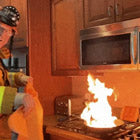 Fire
Fire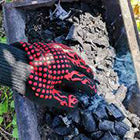 Safety
Safety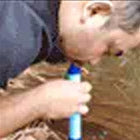 Survival
Survival Protection
Protection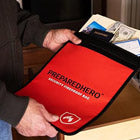 New
New
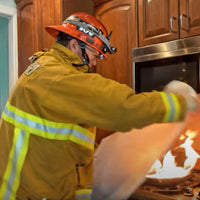 Fire
Fire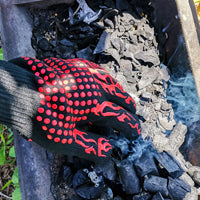 Safety
Safety Survival
Survival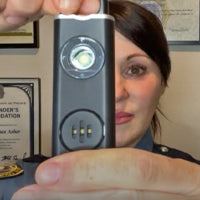 Protection
Protection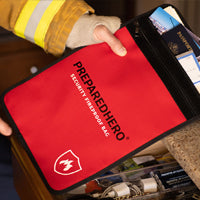 New
New
